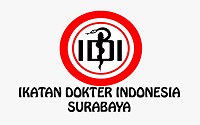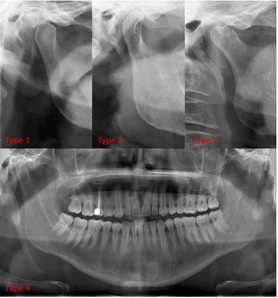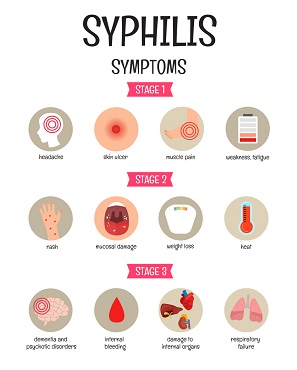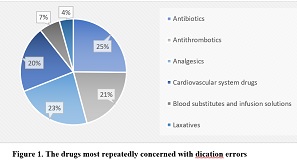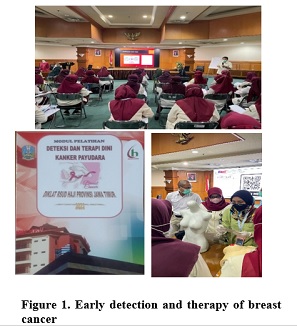Assessment of Readiness for Electronic Medical Record Implementation in the Inpatient Unit of Port Hospital, Jakarta, Indonesia
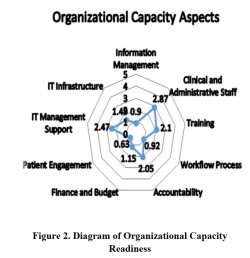
This study aims to assess Port Hospital Jakarta’s readiness to implement Electronic Medical Records (EMR) in inpatient units using the Doctor’s Office Quality Information Technology (DOQ-IT) method. EMR systems are essential in modern healthcare, enhancing efficiency, accuracy, and data security while ensuring compliance with government regulations, such as the Ministry of Health Regulation No. 24 of 2022. Port Hospital Jakarta has implemented EMR only in outpatient services, while inpatient services rely on conventional medical records. This study employed a descriptive quantitative approach, collecting primary data from 127 respondents using a non-probability purposive sampling technique. Data were analyzed using Microsoft Excel to assess organizational readiness in two key aspects: organizational alignment and capacity. The findings indicate that the hospital’s inpatient units fall within Range II regarding organizational alignment, with a score of 17.19, categorized as "Moderately Ready”. Similarly, the organizational capacity aspect also falls within Range II, scoring 33.72, which is also categorized as "Moderately Ready." Overall, the hospital’s readiness level for EMR implementation in inpatient services, considering both organizational alignment and capacity, is in Range II with a total score of 50.91, indicating a "Moderately Ready" status. These findings suggest that while Port Hospital Jakarta has made progress toward EMR adoption in inpatient units, further organizational alignment and capacity improvements are needed to ensure a seamless and effective implementation.
INTRODUCTION
According to Minister of Health Regulation No. 3 of 2020, hospitals are healthcare institutions that provide comprehensive individual health services, including outpatient, inpatient, and emergency care11. Hospitals must ensure patient satisfaction through efficient and effective service delivery as healthcare providers. A critical element in this is the rapid and efficient processing and storage of data, particularly medical records22. Medical records contain essential patient information such as identification, treatment history, examination results, procedures, and other services provided33.
The advent of Industry 4.0 has significantly advanced technology, especially in healthcare. Artificial Intelligence (AI) technologies, like the Internet of Things (IoT), have transformed data processing and storage capabilities through cloud-based solutions. In hospitals, these technologies support the development of Electronic Medical Records (EMRs). An Electronic Medical Record (EMR) is a system that includes a patient’s medical and disease history, diagnostic test results, information on medical expenses, and other medical data44. The implementation of EMRs has become a global priority, both in developed and developing countries, with several healthcare facilities in Indonesia beginning to adopt them55.
Government regulations, such as Minister of Health Regulation No. 24 of 2022, mandate that all healthcare facilities in Indonesia implement EMRs by December 31, 2023. However, as of 2024, only 53% of hospitals have integrated EMRs, indicating challenges such as institutional readiness66. Assessing readiness is crucial for effective implementation, and frameworks like the Electronic Health Record Assessment and Readiness Starter Assessment by Doctor’s Office Quality Information Technology (DOQ-IT) provide valuable insights for designing training and implementation strategies77.
Port Hospital Jakarta is one such facility that has not fully adopted integrated EMRs. While outpatient services have transitioned to electronic records, inpatient units still rely on paper-based records. Observations reveal resource shortages in the filing and assembling departments, leading to excessive paperwork and risks of damage or loss. Implementing EMRs addresses these challenges and ensures compliance with regulatory standards. Therefore, readiness assessments are essential for hospitals like PortHospitas Jakarta to minimize errors and failures in system implementation.
This study analyzes Port Hospital Jakarta’s readiness to implement electronic medical records (EMR), focusing on two aspects: Organizational Alignment (Culture, Leadership, Strategy) and Organizational Capacity (Information Management, Staff, Training, Workflow, Accountability, Finance, Patient Engagement, IT Support, Technology Infrastructure). These aspects are adapted from the DOQ-IT method for assessing EMR readiness.
MATERIALS AND METHODS
This research was conducted from January to March 2024 at the Port Hospital Jakarta. The study utilized a cross-sectional approach with the Doctor’s Office Quality Information Technology method, employing a descriptive quantitative approach. This research has received an ethical certificate from the Health Research Ethics Committee, Research Ethics Committee Esa Unggul University, with approval number 0925-05.075/DPKE-KEP/FINAL-EA/UEU/V/2025 dated May 22, 2025. The population consisted of 172 individuals, with a sample of 127 respondents calculated using Slovin’s formula, with a significance level of 0.05.
Sampling was carried out using proportional random sampling. Respondents filled out a modified 28-item questionnaire based on the Doctor’s Office Quality Information Technology tool, previously validated and tested for reliability88. Participants included nurses from inpatient units, medical record and health information personnel, IT staff, financial department members, doctors, and pharmacy personnel from the inpatient unit.
Data analysis employed descriptive analysis with a quantitative approach. Quantitative results were obtained by summing scores from respondents’ answers. Each question had six options: (a) scored as 0, (b) scored as 1, (c) scored as 2, (d) scored as 3, (e) scored as 4, and (f) scored as 5. The readiness assessment of the DOQ-IT method is comprised of two aspects: organizational alignment and organizational capacity. Each element had three readiness categories with different score ranges. Organizational alignment ranged from 0-15 (not ready), 16-30 (moderately ready), and 31-45 (ready). Organizational capacity ranged from 0-33 (not ready), 34-66 (moderately ready), and 67-100 (ready). Overall readiness assessment ranged from 0-43 (not ready), 44-96 (moderately ready), and 97-140 (ready).
Data analysis was performed using Microsoft Excel to calculate the average score for each aspect and determine readiness scores per aspect. The overall readiness score was calculated by summing the average scores of both aspects to ascertain the overall readiness level.
RESULTS
The Readiness For Implementing EMRs In Inpatient Care At Port Hospital Jakarta In Terms Of Organizational Alignment Aspect.
Questions | Average Score |
Organizational Culture Readiness | |
Q1 | 2.91 |
Q2 | 2.11 |
Q3 | 2.66 |
Q4 | 0.93 |
Sub-total | 8.61 |
Average | 2.08 |
Leadership Readiness | |
Q1 | 3.16 |
Q2 | 1.65 |
Sub-Total | 4.81 |
Average | 2.40 |
Strategy | |
Q1 | 2.45 |
Q2 | 1.61 |
Sub-Total | 4.06 |
Average | 2.03 |
1 Organizational Alignment Readiness | 17.19 (Moderately Prepared) |
Figure 1.Diagram of Organizational Alignment Readiness
Figure 2.Diagram of Organizational Capacity Readiness
Question | Average Score |
Information Management Readiness | |
Q9 | 0.69 |
Q10 | 0.10 |
Sub-Total | 0.79 |
Average | 0.81 |
Clinical and Administrative Staff Readiness | |
Q11 | 3.67 |
Q12 | 2.14 |
Q13 | 2.81 |
Sub-Total | 8.62 |
Average | 2.87 |
Training Readiness | |
Q14 | 2.27 |
Q15 | 1.94 |
Sub-Total | 4.21 |
Average | 2.10 |
Workflow Process Readiness | |
Q16 | 1.20 |
Q17 | 1.06 |
Sub-Total | 2.26 |
Average | 0.92 |
Accountability Readiness | |
Q18 | 2.05 |
Sub-Total | 2.05 |
Average | 2.05 |
Financial and Budget Readiness | |
Q19 | 1.19 |
Q20 | 1.11 |
Sub-Total | 2.30 |
Average | 1.15 |
Patient Engagement Readiness | |
Q21 | 0.56 |
Q22 | 0.55 |
Q23 | 0.78 |
Sub-Total | 1.89 |
Average | 0.63 |
IT Management Support Readiness | |
Q24 | 3.44 |
Q25 | 1.81 |
Q26 | 2.37 |
Sub-Total | 7.62 |
Average | 2.47 |
IT Infrastructure Readiness | |
Q27 | 1.84 |
Q28 | 1.14 |
Sub-Total | 2.98 |
Average | 1.49 |
2 Organizational Capacity | 33.72 |
Hospital Readiness (1+2) | 50.91 |
Ministry of Health, Republic of Indonesia. Regulation of the Minister of Health of the Republic of Indonesia Number 3 of 2020 concerning Classification and Licensing of Hospitals. [Internet]. 2020;(3):1–80. Available from: https://peraturan.bpk.go.id/Download/144763/Permenkes%20Nomor%203%20Tahun%202020.pdf
Mathar I. Manajamen Informasi Kesehatan: Pengelolaan Dokumen Rekam Medis [Health Information Management: Management of Medical Record Documents]. Deepublish; 2018. 245 p.
Ministry of Health, Republic of Indonesia. The Ministry of Health Regulation Number 24 of 2022 on Medical Records. Permenkes 24 Tahun 2022. 2022;(8.5.2017):2003–5. https://peraturan.bpk.go.id/Download/301563/Permenkes%20Nomor%2024%20Tahun%202022.pdf
Neng Sari Rubiyanti. Penerapan Rekam Medis Elektronik di Rumah Sakit di Indonesia: Kajian Yuridis [The Implementation of Electronic Medical Records in Hospitals in Indonesia: A Juridical Study]. J Polit Sos Huk dan Hum. 2023;1(1):179–87. DOI: 10.59246/aladalah.v1i1.163
WHO. Electronic health record system implementation in healthcare system [Internet]. World Health Organization. 2020 [cited 2024 Mar 21]. Available from: https://iris.who.int/bitstream/handle/10665/344249/9789240020924-eng.pdf?sequence=1
Direktorat Pelayanan Kesehatan Rujukan. Laporan Akuntabilitas Kinerja Instansi Pemerintah 2021. Kementrian Kesehat RI [Internet]. 2022;248–53. Available from: file:///C:/Users/WIN10/Downloads/Direktorat Pelayanan Kesehatan Rujukan - 2022 - Laporan Akuntabilitas Kinerja Instansi Pemerintah 2021.pdf
Ngusie HS, Kassie SY, Chereka AA, Enyew EB. Healthcare providers’ readiness for electronic health record adoption: a cross-sectional study during pre-implementation phase. BMC Health Serv Res [Internet]. 2022;22(1):1–12. DOI: 10.1186/s12913-022-07688-x
Suhartini, Karmanto B, Haryanto Y, Budiyanti N, Khasanah L. Tingkat Kesiapan Implementasi Rekam Kesehatan Elektronik Menggunakan DOQ-IT [The Readiness Level for the Implementation of Electronic Health Records Using DOQ-IT]. J Manaj Inf Kesehat Indones. 2021;9(2):164. DOI: 10.33560/jmiki.v9i2.336
Awol SM, Birhanu AY, Mekonnen ZA, Gashu KD, Shiferaw AM, Endehabtu BF, et al. Health professionals’ readiness and its associated factors to implement electronic medical record system in four selected primary hospitals in Ethiopia. Adv Med Educ Pract. 2020;11:147–54. DOI: 10.2147/AMEP.S233368
Aldebasi B, Alhassan AI, Al-Nasser S, Abolfotouh MA. Level of awareness of Saudi medical students of the internet-based health-related information seeking and developing to support health services. BMC Med Inform Decis Mak. 2020;20(1):1–8. DOI: 10.1186/s12911-020-01233-8
Mardani H, Jelvay S, Shokrpour N, Sharifian R. Assessment of the Readiness of the Hospitals Affiliated to Shiraz University of Medical Sciences for Implementation of Electronic Health Record Based on the California Academy of Family Physicians Tool: A case study in Iran. Heal Manag Inf Sci Orig. 2022;9(1):45–52. DOI: 10.30476/jhmi.2022.94368.1117
Putra Y, Fahlavi M. Decision Making at PT. Telekomunikasi Indonesia Tbk. ResearchgateNet. 2019;(November). file:///C:/Users/WIN10/Downloads/Direktorat Pelayanan Kesehatan Rujukan - 2022 - Laporan Akuntabilitas Kinerja Instansi Pemerintah 2021.pdf
Hendra Kusuma D, Amalina O, Arifa Zulfiana T. Faktor-Faktor Keberhasilan Dalam Penerapan Sistem Enterprise Resources Planning Pada Perusahaan Jasa Konsultan Teknologi Informasi (Studi Kasus Pada Pt. Phicos Cipta Media It Consultant) [Factors for Success in the Implementation of Enterprise Resource Planning Systems in Information Technology Consulting Companies]. Hubisintek. 2021;239–45. https://ojs.udb.ac.id/index.php/HUBISINTEK/article/view/1399
Sulistya CAJ, Rohmadi. Literature Review: Tinjauan Kesiapan Penerapan Rekam Medis Elektronik Dalam Sistem Informasi Manajemen Di Rumah Sakit [Literature Review: Review of Readiness for Application of Electronic Medical Records in Management Information Systems in Hospitals]. Indones J Heal Inf Manag. 2021;1(2). DOI: 10.54877/ijhim.v1i2.12
Hartawan, Nurwati, Mokodompit EA. Pengaruh Kecerdasan Emosional, Perceived Organisasional Support, Servant Leadership Dan Keterlibatan Kerja Terhadap Kinerja Staf Pribadi Pimpimpinan (Spripim) Polda Sultra [The Influence of Emotional Intelligence, Perceived Organizational Support, Servant Leadership, and Work Engagement on the Performance of Personal Staff of the Leadership (SPRIPIM) at the Southeast Sulawesi Regional Police (Polda Sultra)]. J Manajemen, Bisnis dan Organ [Internet]. 2023;7(3):615–30. Available from: https://journal.uho.ac.id/index.php/jumbo/article/view/590
Heponiemi T, Gluschkoff K, Vehko T, Kaihlanen AM, Saranto K, Nissinen S, et al. Electronic Health Record Implementations and Insufficient Training Endanger Nurses’ Well-being: Cross-sectional Survey Study. J Med Internet Res. 2021;23(12). DOI: 10.2196/27096
Suryani L, Suhenda A, Fadly F, Febriani AN. Prosedur Dokumentasi Rekam Medis Di Filing Rumah Sakit Permata Bunda Ciamis [The Procedure for Medical Record Documentation in Filing at Permata Bunda Ciamis Hospital]. J Pengabdi Kpd Masy. 2023;5(2):79–86. DOI: 10.37160/emass.v5i2.196
Rizkya AA, Yuliani RD. Kepuasan Pasien dalam Penggunaan Sistem Informasi Portal di Rumah Sakit Muhammadiyah Lamongan [Patient Satisfaction in the Use of the Portal Information System at Muhammadiyah Lamongan Hospital]. 2023;1–7. https://scholar.archive.org/work/e3xn7ndhd5dzxorlsl7cgafaja/access/wayback/https://archive.umsida.ac.id/index.php/archive/preprint/download/4212/30085/34240
Ninik Yuniati NP, Sumada IM, Gde Raka AA. Implementasi Kebijakan Sistem Informasi Kesehatan Krama Bali Sejahtera (Sik-Kbs) Di Provinsi Bali [Implementation of the Health Information System Policy Krama Bali Sejahtera (SIK-KBS) in Bali Province]. J Rev Pendidik dan Pengajaran [Internet]. 2023;Volume 6 N(4):149–58. Available from: https://journal.universitaspahlawan.ac.id/index.php/jrpp/article/view/19770
Abdulai AF, Adam F. Health providers’ readiness for electronic health records adoption: A cross-sectional study of two hospitals in northern Ghana. PLoS One [Internet]. 2020;15(6):1–11. DOI: 10.1371/journal.pone.0231569
Copyright (c) 2025 Ivonia Kenahin Bahi

This work is licensed under a Creative Commons Attribution-ShareAlike 4.0 International License.
- The journal allows the author to hold the copyright of the article without restrictions.
- The journal allows the author(s) to retain publishing rights without restrictions.
- The legal formal aspect of journal publication accessibility refers to Creative Commons Attribution Share-Alike (CC BY-SA).
- The Creative Commons Attribution Share-Alike (CC BY-SA) license allows re-distribution and re-use of a licensed work on the conditions that the creator is appropriately credited and that any derivative work is made available under "the same, similar or a compatible license”. Other than the conditions mentioned above, the editorial board is not responsible for copyright violation.






